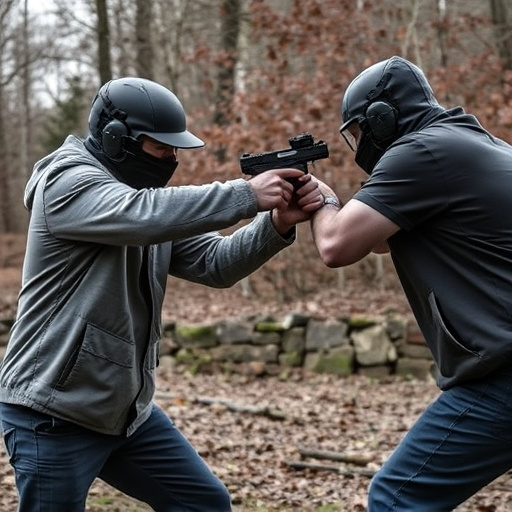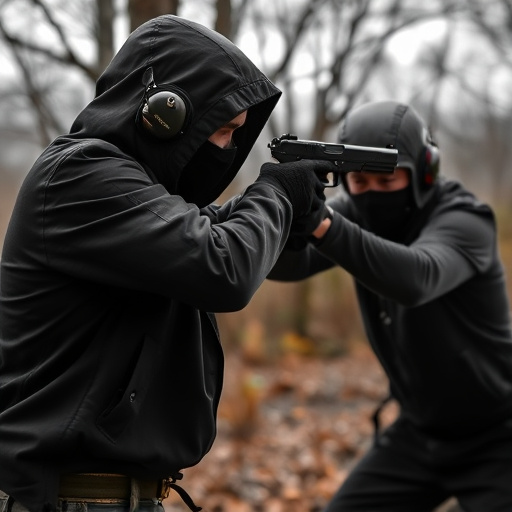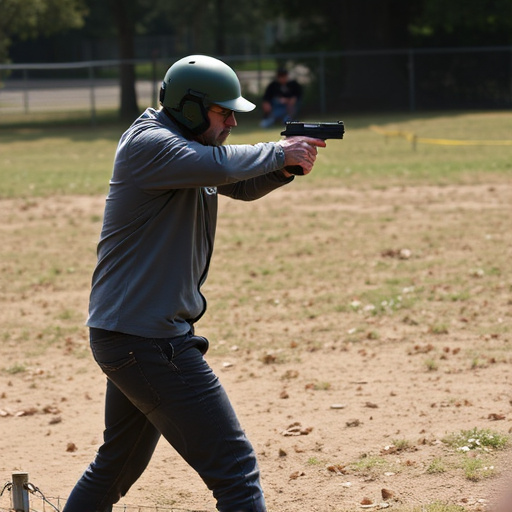When buying a stun gun for personal safety, consider voltage (for better clothing penetration), size/weight (for discreet daily carry) and delivery mechanism (electro-chemical vs. high-voltage, low-current). Clothing type, thickness, moisture content, and fasteners also impact stun gun effectiveness, so assess your needs to ensure the stun gun provides sufficient penetration power. Remember, these factors are crucial in selecting a stun gun that offers the right balance of protection and practicality. (Keywords: what to look for when buying stun guns)
Voltage penetration through thick clothing is a critical aspect of personal safety, especially when considering self-defense tools like stun guns. This article explores the science behind voltage penetration and its factors, providing insights into how well stun guns can effectively stun through various fabrics. We’ll guide you through key considerations when purchasing stun guns, focusing on what to look for to ensure optimal protection. Understand the importance of choosing the right device for your safety needs.
- Understanding Voltage Penetration: Factors Influencing Effectiveness
- Key Considerations When Purchasing Stun Guns for Optimal Protection
Understanding Voltage Penetration: Factors Influencing Effectiveness

Understanding Voltage Penetration: Factors Influencing Effectiveness
When considering what to look for when buying stun guns, understanding voltage penetration through thick clothing is crucial. The effectiveness of a stun gun’s jolt depends on several factors. First, the voltage output plays a significant role; higher voltage generally translates to a more powerful shock. However, simply having high voltage isn’t enough. The amperage, or the current flowing through the body, also matters greatly. A lower amperage can still deliver a strong stun even at lower voltages due to its ability to disrupt nerve signals quickly.
Other factors include the type of clothing the target is wearing and its thickness. Different materials conduct electricity differently. For instance, moisture in fabric or the presence of metal fasteners can enhance conductivity, making it easier for the voltage to penetrate. Conversely, dense, non-conductive materials like thick denim or wool can significantly reduce the effectiveness of a stun gun’s charge. Therefore, buyers should consider these variables when selecting a stun gun to ensure its penetration power aligns with their needs.
Key Considerations When Purchasing Stun Guns for Optimal Protection

When purchasing a stun gun for personal protection, several key considerations come into play. Firstly, check the voltage. Higher voltage levels typically penetrate clothing better, ensuring effective stuning regardless of how many layers you’re wearing. Look for devices with at least 12,000 volts or higher to ensure optimal penetration through thick fabrics.
Secondly, consider the size and weight. You’ll want a stun gun that’s easy to carry and discretely hide. Smaller, lightweight models are more convenient for everyday carry but may have lower voltage outputs. Striking a balance between power and portability is crucial for ensuring you have the protection you need when you need it. Additionally, check the delivery mechanism. Different stun guns use various methods like electro-chemical or high-voltage, low-current technologies; understand how each works to make an informed decision based on your specific needs and comfort level.
When considering the purchase of a stun gun, understanding how voltage penetrates through thick clothing is vital. By grasping the factors that influence its effectiveness, you can make an informed decision regarding your personal safety. When shopping for stun guns, look for high-amp outputs and durable designs to ensure optimal protection. Remember, the right choice can be a game-changer in potentially dangerous situations.
